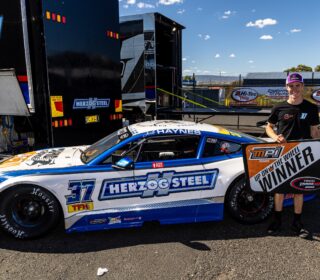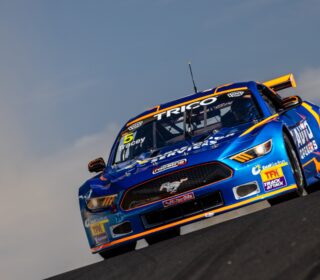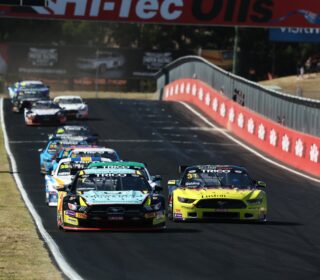WILD TRACKS YOU NEVER KNEW ABOUT: EAST LONDON
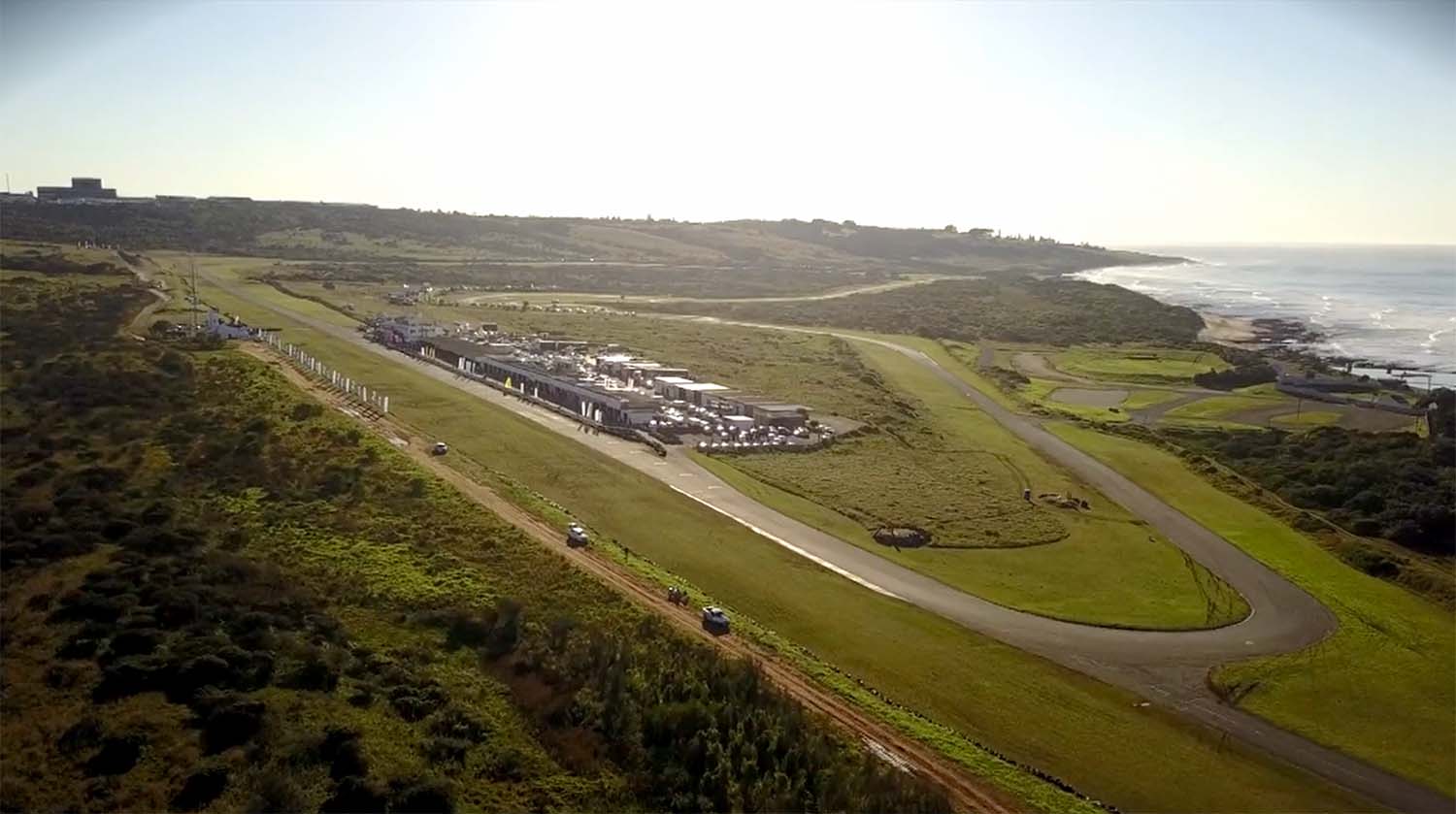
PICTURE a circuit as fast as Phillip Island, as narrow as a winding hills road and as unforgiving as a 1960s Grand Prix venue and you get about half way to describing the quite remarkable East London Grand Prix circuit, a wild old-school circuit you wish you’d known about years ago..
WORDS: Richard Craill IMAGES: GTC TV / Google Maps
IF YOU SPLIT the country into thirds, South Africa’s Eastern Cape province straddles the rugged coastline down it’s lower middle section, bordered by KwaZulu Natal and Durban to the North and the Western Cape and Cape Town to the South West.
Famed for its coast and diverse landscape, the province can also offer tangible evidence in claims that it is also the birthplace of South African Motorsport, thanks mainly to the existence of the East London Grand Prix circuit.
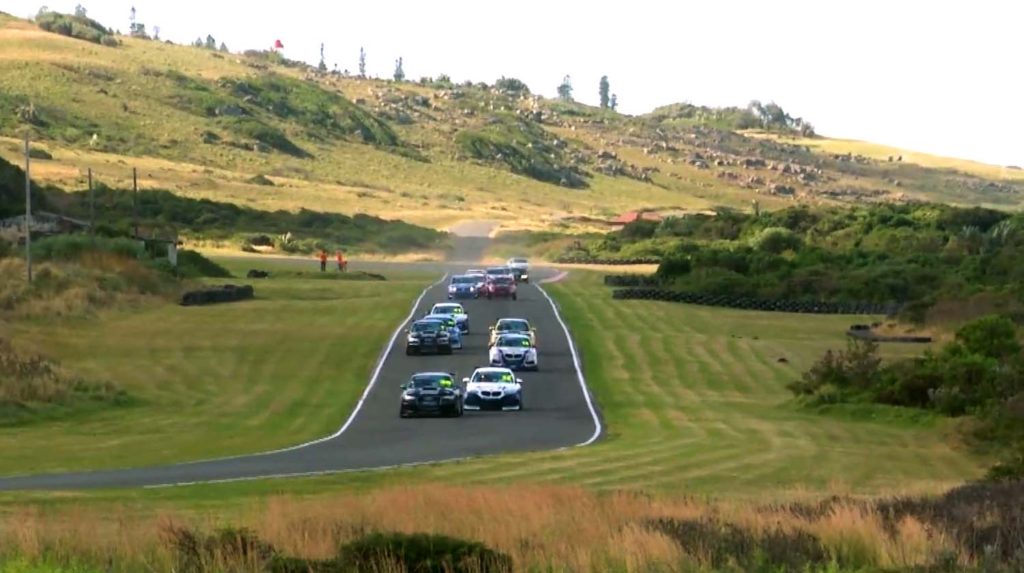
Located perched on the coast to the South of the city of East London, with a metro area of over 800,000, the circuit has a long, fascinating, and sometimes tumultuous history.
And while it’s not the most famous South African circuit – Kyalami holds that reputation – it’s certainly the fastest and most fearsome of all the African nations eclectic mix of circuits.
EARLY DAYS
ACCORDING to the Border Motor Sport Club that promotes events at the venue, interest in motor sport in the region was ignited in the early 1930s after a circular road in the city’s west was constructed, attracting the attention of a Mr. Brud Bishop – the motoring editor of newspaper, The Daily Dispatch.
So enamoured with the drive was Mr. Bishop that he suggested that some form of car race be held on the new road.
“His ideal position at the Dispatch allowed him all the right contacts and, as he was born in England and had started his working career there, entries were soon being received from abroad, as well as around the country,” writes the club’s official history.
“It was first mooted as a local event, under the name of the “Border Hundred”. But so widespread was the support, and so eager the public of South Africa to see a road race, that it soon developed into a national event, and then an international event as entries from abroad gave the event international status and it became known as The South African Grand Prix.”
The initial East London circuit was an enormous 15.2 miles (24.6km) long, with the 1934 South African Grand Prix behind held over 6 laps for a prize pool of 250 pounds.
The race, which apparently attracted 65,000 spectators, was won by the appropriately named Whitney Straight, an ‘American Millionaire sportsman, who flew out from England specially to compete in his Maserati racing car’. Incidentally, his brother, Michael, finished third.
Straight set a world record in winning the first South African Grand Prix: his average winning speed of 95.43 Miles per Hour – and a top speed of 154 – astonishing for the era.
The circuit would host the South African Grand Prix from 1936 through 1939, stopping only for the outbreak of World War II. The circuit had been modified with a section called Potters Pass – we will come back to that later – introduced to avoid the circuit cutting through the township of West Bank.
While racing was kept alive during the war, the original layout was cut off by the construction of the new East London airport, necessitating a brand-new circuit, using elements of the original course in what is it’s current location.
The new track was 2.4 miles (3.84km) long, and cut through an old shooting range as it ran alongside the rugged Eastern coastline.
THE FAMOUS NAMES COME
THE REVISED ‘Prince George Circuit’, named after Royalty, returned to prominence in 1960 when it celebrated the return of the South African Grand Prix, not held since World War II.
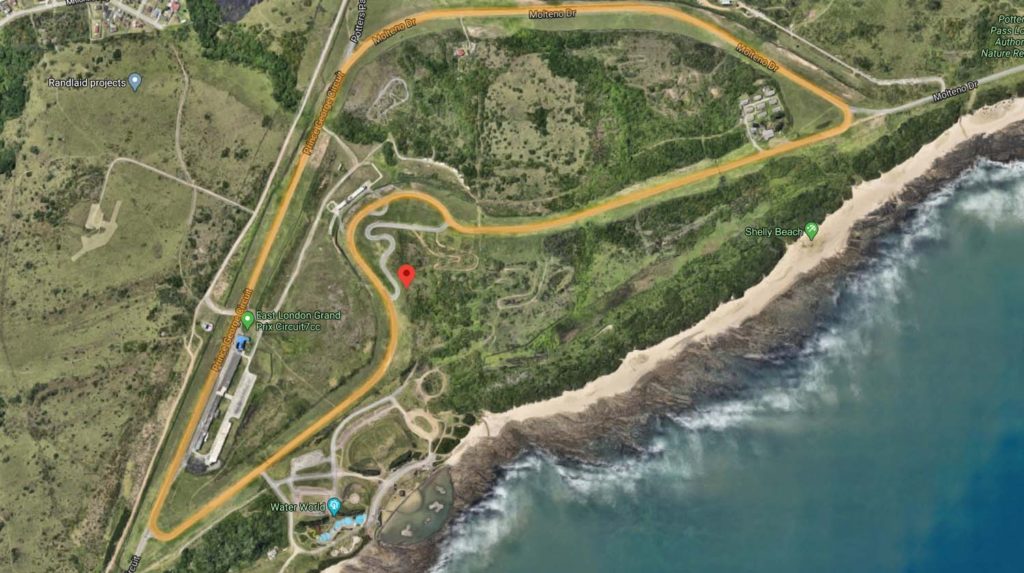
Much like the Tasman Series in Australia and New Zealand at the time, South Africa’s key motorsport events were held in the European Winter, facilitating a host of star drivers and their cars to attend the major events in the country.
As such, the first of two Grands Prix held in 1960 was won by Belgian Paul Frere, the second by Stirling Moss.
Jim Clark won the 1961 and 1963 races in a Lotus while Graham Hill won the 1962 race driving a BRM. The race was not held in 1964, but returned for two further years; Clark winning again in ’65 and Mike Spence winning the final Grand Prix at the circuit the following year.
The famous Kyalami circuit then became the home of South Africa’s round of the World Championship; East London relegated to more national duties.
The circuit had a lengthy relationship with Mercedes-Benz, the German marque’s South African headquarters located in East London, not far from the circuit.
After falling on hard times in the late 1990s and 2000s, the Border Motorsport Club announced in 2014 that major support had been found for a revitalisation of the circuit, though it seems that this is yet to occur with any great scope.
THE TRACK
THE OBVIOUS comparisons you draw when you get a look at the East London circuit are immediately with Phillip Island – both with the seaside location and the high speed, unforgiving nature of the track itself.
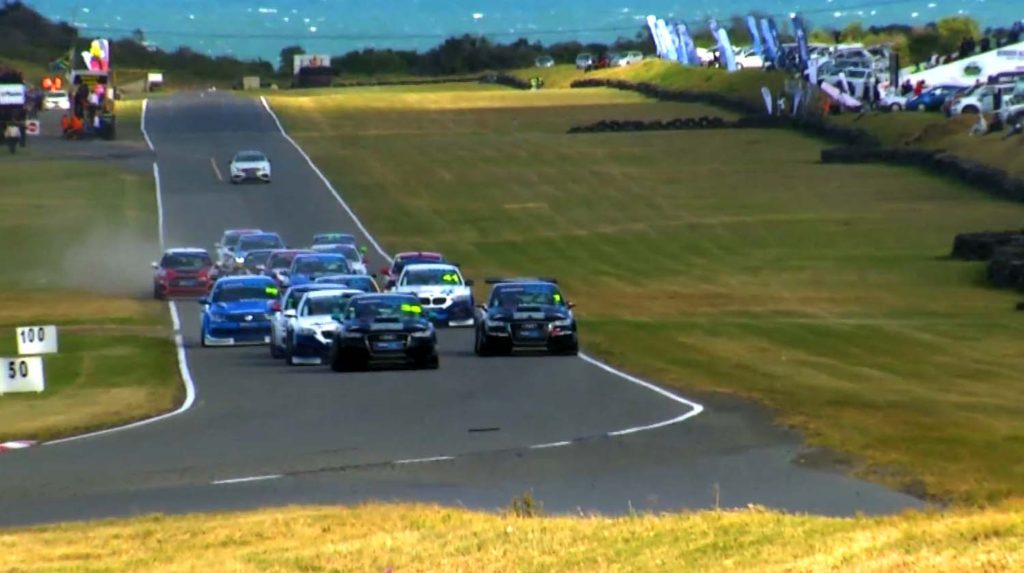
Gently undulating rather than featuring any real elevation change, the circuit itself is narrow – three cars wide at it’s best, narrower in other places. It appears like a ribbon of black cut into the dunes near the sea, extraordinarily little in the way of obvious concrete or armco walling obvious at any locations away from the start-finish straight.
There’s just a few tyre bundles in places and otherwise, earth banks surround the circuit following a runoff comprised of several meters of grass. And that’s it.
South Africa’s top Touring Car Category, GTC, races regularly at the circuit and are the best placed to offer an idea of the challenge involved. Their two litre, turbocharged cars are somewhere in the middle of Supercars and TCR for outright lap speed and require plenty of finesse to negotiate East London.
With an average lap speed of 170km/hr, GTC cars are at full throttle for 71% of a very fast, 1m22-second lap.
A lap begins accelerating through sixth gear on the run to turn one, Potters Pass.
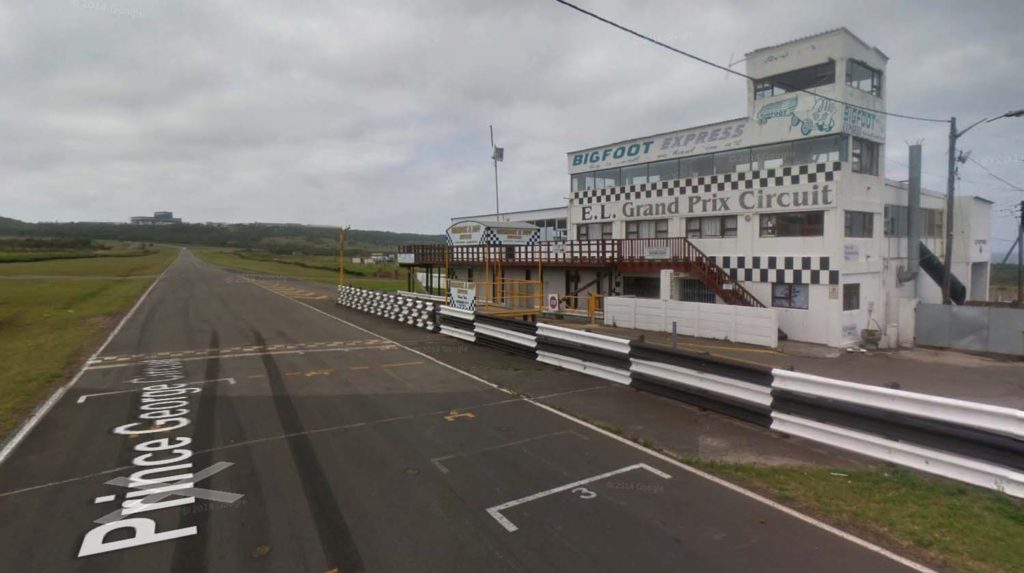
It is the corner we touched on before, but in deviating the original road circuit they also engineered a fearsome right-hander, the quickest corner of it’s type in the country and a hell of a way to begin a lap. Not cambered or banked to help a car turn in, Potters is a 220km/hr thread the eye of the needle experience in a Touring Car.
“(The track is) notoriously known for Potters pass, a corner taken at over 220km/hr. It separates the men from the boys,” says double GTC Champion, Michael Stephen; the sport’s most successful driver.
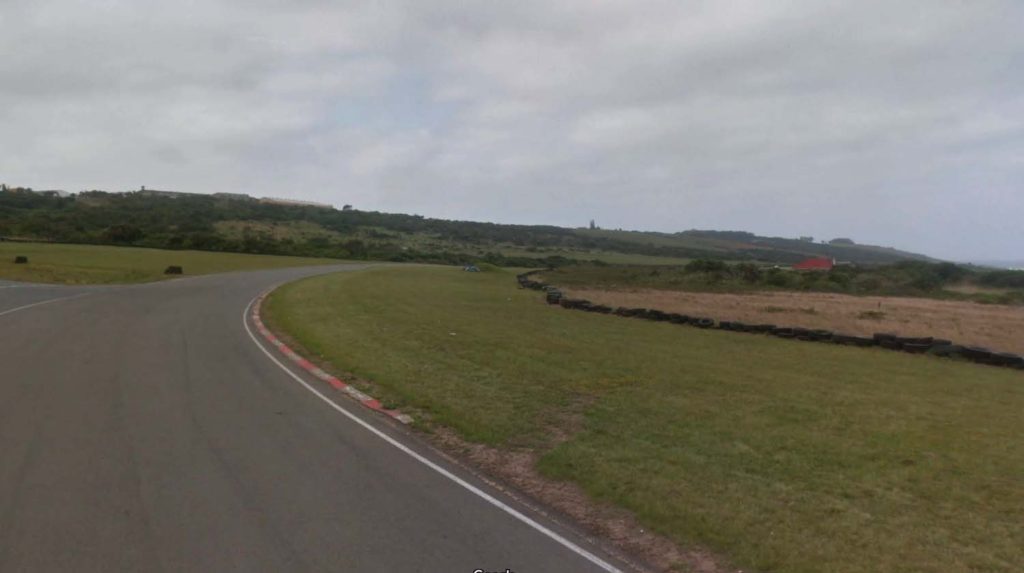
“It’s the fastest corner in South Africa,” his direct rival Gennaro Bonefede adds. “They say you need.. big manly parts to go through there. It’s extremely fast.”
After Potters comes Rifle bend, a flat-out 240km/hr kink, quickly followed by a massive stop to a right-hand hairpin called Cocobana; it’s one of two critical harpins on the circuit and at just 60km/hr, one of it’s slowest points.
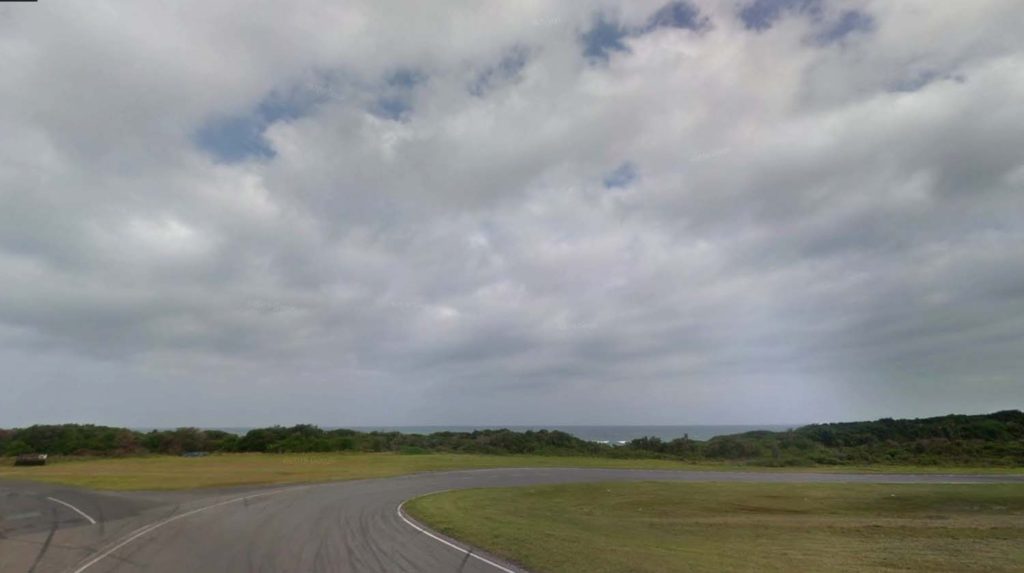
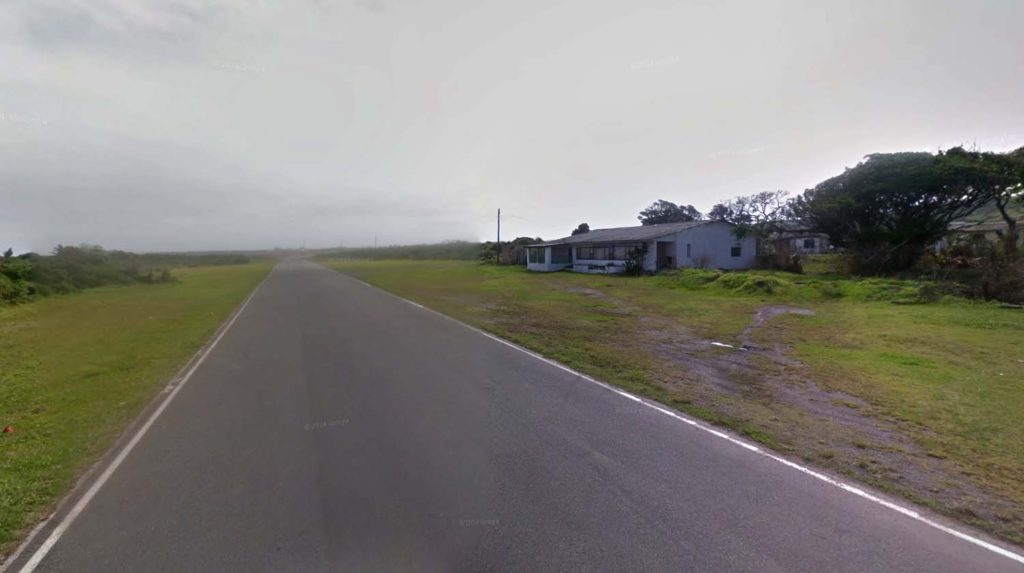
Now running parallel to the sea, Beach straight is another flat-out blast before the field gets to turn four, Butts bend. The cars brake and turn right through Butts and then slow into the left-hander at The Esses, Turn 5.
Commonly known as the complex, this is a series of quick direction changes and doubles as the circuit’s go-kart circuit. After five, turn six is a slower left-hander called Cox’s Corner before the road sweeps right again through The Sweep.
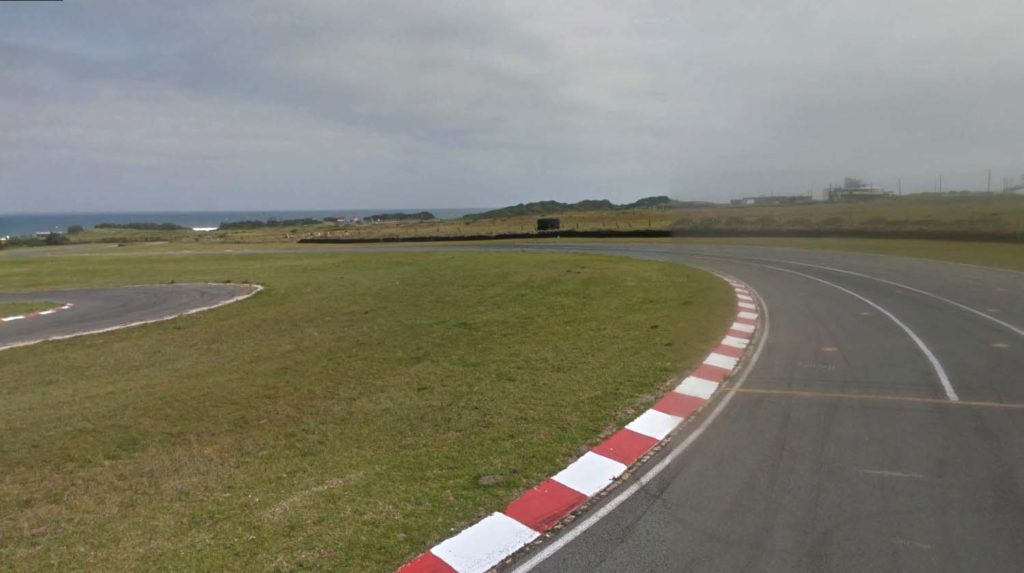
Another quick blast through the gears brings the field to the final corner: Beacon Bend.
Though the slowest on the circuit, it’s arguably the most critical; a slow exit from here will kill momentum all the way down the longest straight on the track, before reaching Potters once again.
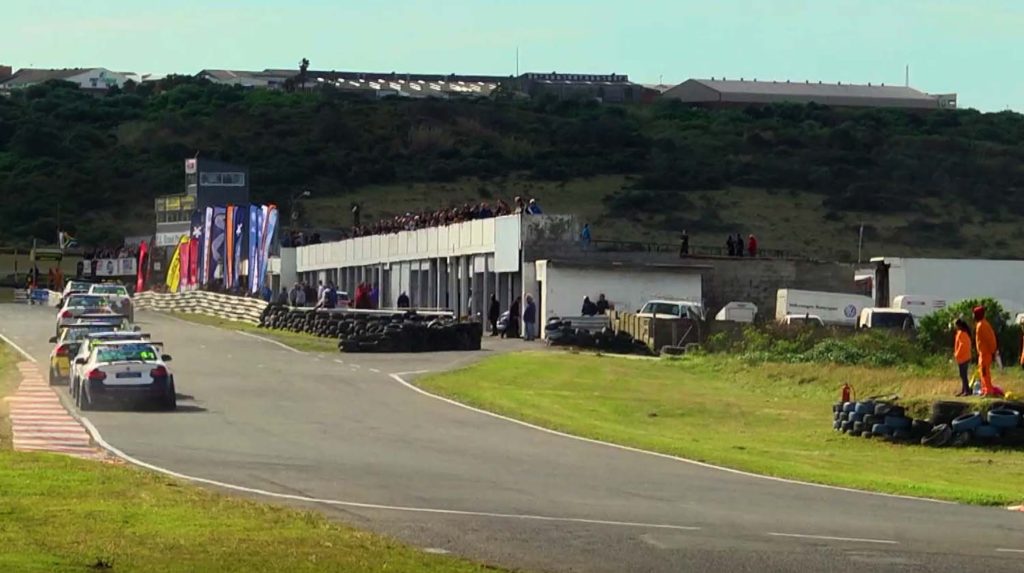
“I think the trick on this circuit is that it’s a low downforce circuit, but you’ve also got two sharp hairpins at the end of both straights,” Stephen adds.
“The first one being Cocobana where you go down to 60kays, a right hander. Hard braking from 6th gear all the way down to first and you power down at the exit.
“You’ve got another long stretch up to the complex into a really tricky infield section, bouncing over a few kerbs. The car needs to be dialed in to get the most out of the car through there. Then again there’s a long straight up to the final corner, Beacon Bend, from 220 down to 60 kays an hour to get a good run down the main straight.”
From afar, East London looks like a circuit lost in time. In its current form it has every bit the history of Phillip Island but in a country with a harsher economic climate, upgrades have been much harder to come by over the years.
As such, E.L. sits as a time capsule of the way circuits were more than three decades ago.
That is not to diminish this incredible circuit – we’re glad it still exists and of all the ‘first world’ motorsport nations on the planet, perhaps South Africa is the only one where such a place could survive in this day and age of OH&S and risk assessments.
If it were located in Australia, it would have been upgraded or shut down years ago. But perhaps the fact that it lives in the South African bubble, generally isolated from much of the world’s motorsport scene, is a blessing in disguise and has allowed the circuit to continue to be just as it is.
With a fearsome corner revered by drivers, a lengthy history featuring all of the world’s most recognisable Grand Prix names of the 1960s and a unique character and reputation all of its own – not to mention an incredible location – the East London Grand Prix circuit should be held in higher esteem globally than it is.
Hopefully one day it receives the upgrades a venue with such an incredible history deserves.



